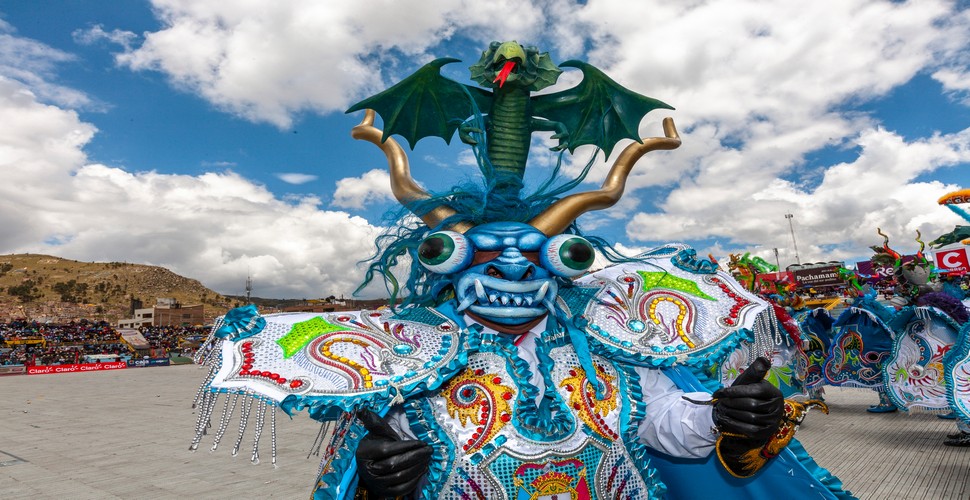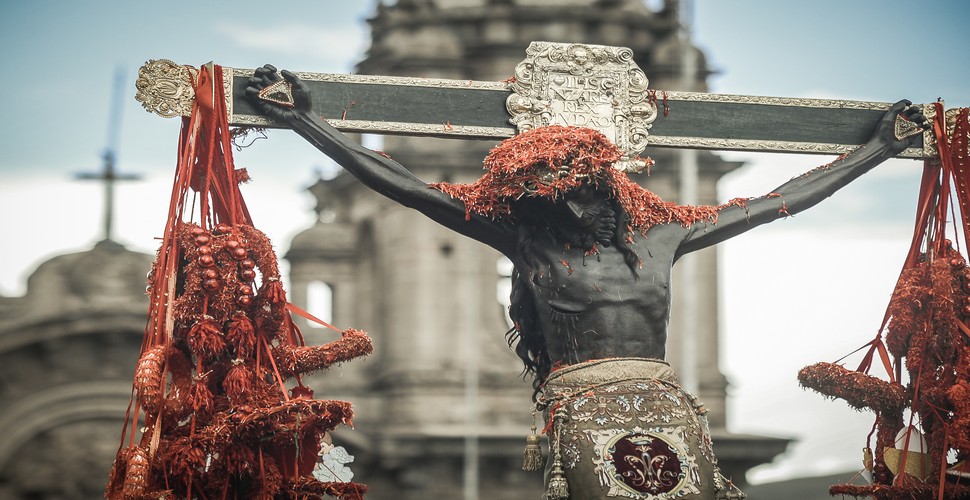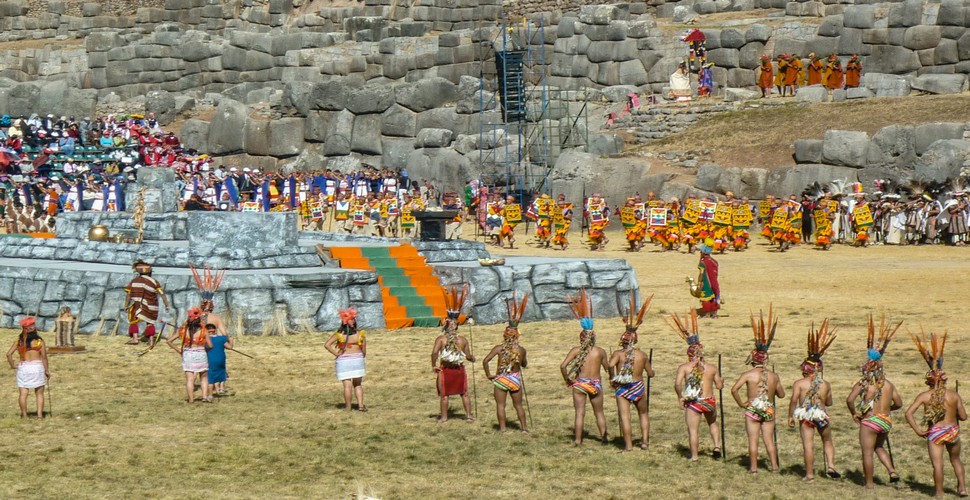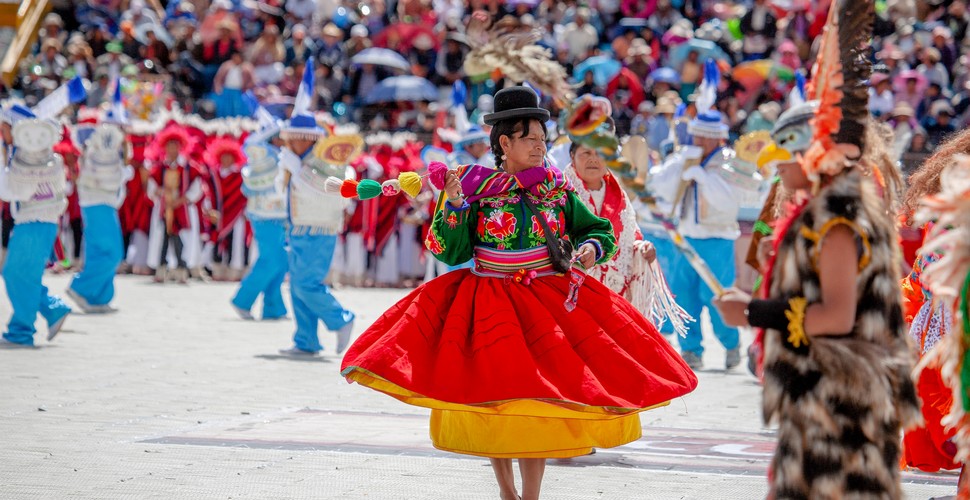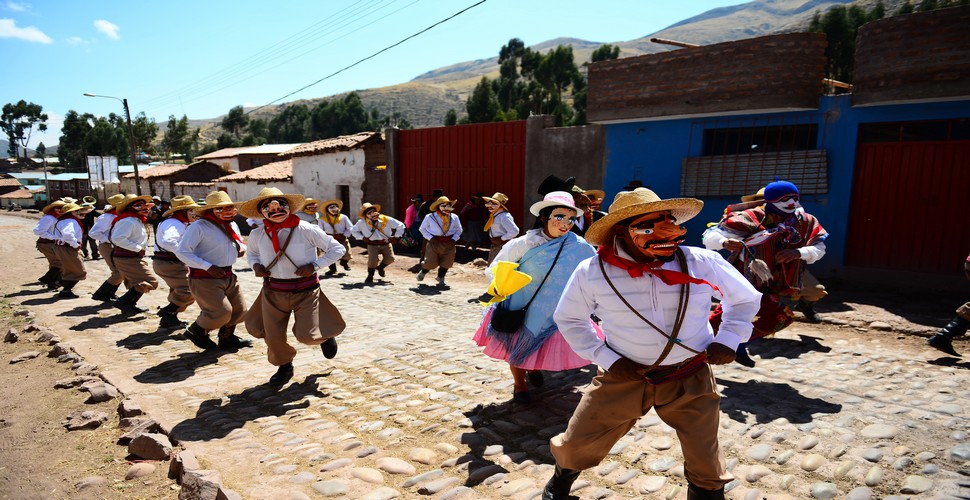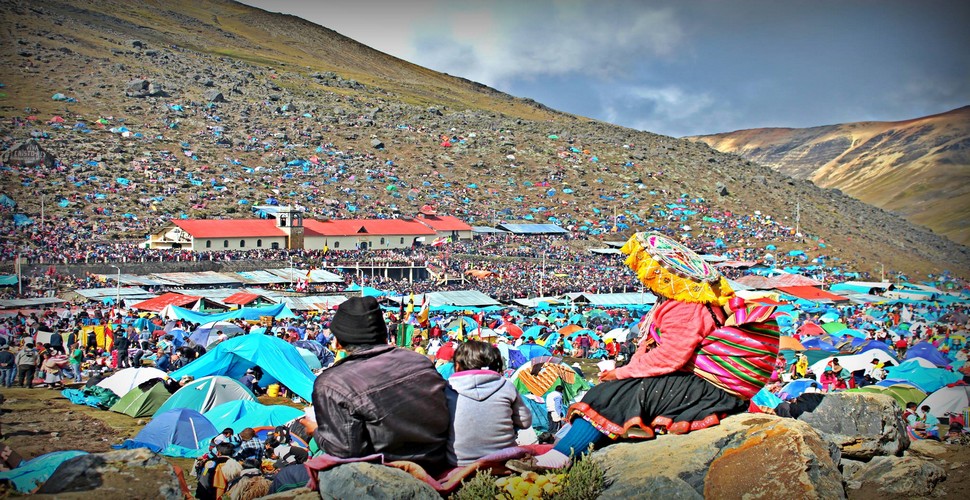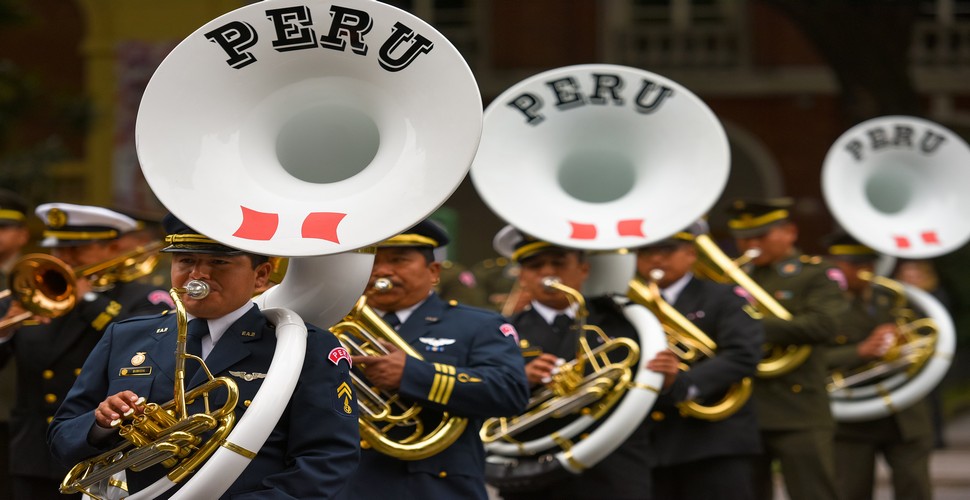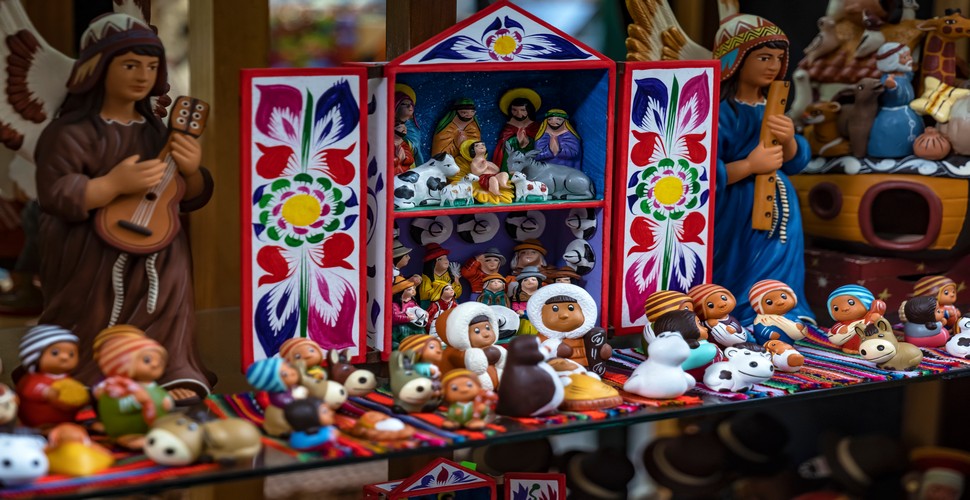

Claire Dean
Travel in South America is a joy to behold. The rich variety of destinations, experiences, landscapes and geography fascinated me so much, that I chose to relocate here, over 20 years ago! The best thing I ever did! Allow me to share my knowledge and passion for Central and South America with you and help you plan your holiday of a lifetime!

The Best of Peru's Yearly festivals
Written by:Claire Dean
Last Update: 2025-02-10
From festivities with origins stretching back thousands of years, to Catholic celebrations introduced by Spanish colonists, Peru’s festivals have many diverse influences. But they all have one thing in common, each one brims with vibrant dancing, colorful costumes singing, and people coming together to celebrate Peruvian culture. Here are some of the most important annual Peruvian fesitivals and holidays in Peru.
Virgen de La Candelaria
Semana Santa in Peru
Semana Santa, which translates as “Holy Week”, is Peru’s Easter extravaganza. Jubilant celebrations are held in the week leading up to Easter Sunday. The fiesta takes place all over the country, but Cusco and Ayacucho are famed for their particularly elaborate events. The festival combines elements of Catholic religious rites with customs unique to the Andes. Colorful processions, folk dancing displays, traditional feasts, local music concerts, and near-constant street events will keep you busy all week.
Señor De Los Temlores, Cusco, Semana Santa
Inti Raymi Festival
Inti Raymi is the most important date in Cusco’s events calendar. For more than 500 years, the festival has marked the celebration of Inti Raymi (The Sun Festival) and Pachamama (the Earth Mother). Taking place on June 24, it also celebrates the winter solstice – the shortest day of the year. When the Incas ruled, nobles and priests of the empire would gather in Cusco, along with thousands of people from the wider Inca empire. Celebrations started at dawn and carried on into the night, with much singing and dancing. Today’s celebrations still carry elements of the historic festival, with the Sapa Inca (emperor) opening the festival by praising the Sun God in front of Qorikancha (the Inca Temple of The Sun) in the town center. The royal entourage then parades through Cusco’s Plaza de Armas. Later in the day, the festival culminates in a staged sacrifice of a llama (no animals are harmed) at the Saqsaywaman citadel.
Inti Raymi
La Virgen de la Candelaria
The Virgen de la Candelaria is one of the most renowned music festivals in Peru, and indeed all of South America. This festival takes place in Puno on the days around Candlemas, in early February. It’s the most important festival in the region around Lake Titicaca and celebrates Virgen Candelaria, the patron saint of Puno. Festivals in Peru are colorful displays of the country’s history, culture, and traditions. If you’re traveling to Peru, attending one of these celebrations might be the highlight of your trip. From festivities with origins stretching back thousands of years to Catholic celebrations introduced by Spanish colonists, Peru’s festivals have many diverse influences. But they all have one thing in common, each one brims with exultant dancing, singing, and people coming together to celebrate Peruvian culture.
Virgen de La Candelaria
Virgen del Carmen
Virgen del Carmen is one of the biggest events in Peru. Held in July in the small town of Paucartambo (four hours from Cusco), this festival dates back to the thirteenth century. The festival has its roots in the legend of a young woman who was on her way to Paucartambo and came across the head of a woman. The bodiless head spoke to the young woman and told her its name was Carmen. The head granted wishes and made miracles happen in the village, leading to her becoming the patron saint of Paucartambo and the Mestizo population. During the festival, residents of the town carry an image of Carmen through the streets, chasing away demons and blessing onlookers. Dancers in masks leap onto rooftops and the procession culminates in the cemetery, where people can pay homage to the dead.
Virgen Del Carmen, Paucartambo
Qoyllur Rit’i
The Qoyllur Rit’i pilgrimage is a centuries-old religious pilgrimage that is practiced by those who live in the high Andes. Every year, days before the celebration of Corpus Christi, the local villages send a delegation of colorful dancers and pablitos to the Sanctuary of the Señor de Qoylloriti. This Sanctuary is situated spectacularly at the base of the Sinakara mountain, about 3-4 hours’ walk above the village of Mahuayani, at 4600m (15,092 ft). This is a breath-taking spectacle with days of non-stop dancing, intermixed with Catholic masses. There is truly nothing like it, and if you only get the chance to experience a single traditional celebration, make it this one!
Qoyllur Rit’i
Fiestas Patrias
Fiestas Patrias is the national holiday, celebrating the country’s independence from Spain on the 28th of July 1821. Similar to the 4th of July celebrations in the United States, Fiestas Patrias is replete with processions, musical parades, and the all-important fireworks. It’s one of the most joyful Peru festivals you can witness! You’ll be able to attend concerts in Cusco’s atmospheric squares and watch the locals marching through the streets wearing red and white, which are the national colours of Peru. Restaurants and bars in the city turn the party vibe up to the max, and it’s a great time to get stuck into the local food and drink scene while rubbing shoulders with the friendly residents.
Fiestas Patrias
Christmas and New Year
Christmas and New Year are special in Peru and focus on time with family and friends. In Cusco, the main event takes place on the 23rd and the 24th of December, called the Santurantikuy. The city transforms into an enormous open-air market, where is common to buy and sell icons of Catholic saints to celebrate the holiday. Families come here to buy figurines, sculptures, or even whole nativity scenes to decorate their homes. It’s a great atmosphere, and even if religion isn’t your thing, wandering around the stalls and soaking up the vibe is a unique experience.


